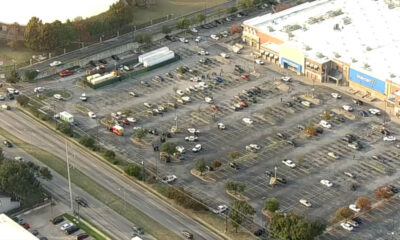Reviews
How Control Rooms Evolve in Business Over the Years

The control room of any business operation is the heart of all its activities. For years, businesses have used control rooms, which have grown and morphed due to technological breakthroughs and transaction demands. Control rooms have progressed from cheap networks to robust communication roles in power supply, natural oil and gas, and transportation. This piece will explore a few critical stages of control room advancement.
The Evolution of Control Rooms
Control rooms have advanced from large rooms for manual data entry to data collection with little or no human involvement. Knowing the driving factors of their transformation can help us better understand their evolution.
The Beginning: Analog Systems
For decades until the mid-20th century, control rooms were strictly the province of simple analog systems. Those rooms often comprised large boards of switches, tumbles, and indicators that showed production processes and equipment status.
Managers in these early control rooms were forced to independently analyze the information produced and react to what was provided. Only intercom systems and radios were used to communicate between operators in the control room and field personnel. This slow method of communication led to longer problem resolution times and less efficient operation overall.
While this approach performed fairly, operators were restricted by the volume of data they could process. Due to the archaic nature of the analog systems, they could not swiftly respond to changes and errors in production.
The Digital Revolution: SCADA and DCS Systems Rise to Prominence
The introduction of digital technologies in the 1970s and 1980s completely revolutionized the control room.
Industries that needed precise real-time monitoring and control of complex operations began using more advanced systems as standard operating procedures. These systems included Supervisory Control and Data Acquisition (SCADA) and Distributed Control Systems (DCS). Some of the benefits of this digital evolution in control rooms include:
- Control rooms progressed to making faster and more accurate decisions because they now can analyze and not just collect data.
- This data-analyzing feature allows them to present more user-friendly solutions with digital technology rather than running files manually.
- Day-to-day activities and equipment can still be monitored when production facilities are far away or in hazardous environments.
- New generations of Human-Machine Interfaces (HMI) and SCADA systems make it easier for an operator to interface with complex systems. Thus, they provide real-time graphic feedback and help businesses cut operating expenses.
Information Technology (IT) and Operation Technology (OT) Integration
OT and IT were combined into control rooms during the late 1990s and early 2000s, making new systems more complex and linked. During this time, business management software and systems for Enterprise Resource Planning (ERP) were implemented.
Business operators could now use control rooms to gain information and improve resource utilization and organizational performance throughout production. This advanced system also extended the possibility of faster communication between the control room and other departments in the company.
Modern Control Rooms: Artificial Intelligence (AI)
Control rooms have evolved to become technologically strategic centers that employ data analytics and AI to track and forecast issues. This advancement helps companies transform from coping strategies to proactive strategies for managing risks. Nowadays, examining a large amount of data without human intervention to derive useful information in business has become possible.
The Future of Control Rooms: Virtual Reality (VR) and Augmented Reality (AR)
Future trends for control rooms are even greater than mere visualization. Operators can work in different locations to monitor and control performance via advanced interfaces such as AR and VR. These technologies will give operators more natural ways of interacting with data and systems in virtual environments.
Conclusion
It has been repeatedly proven that establishments can collapse without proper structure. This is why control rooms will continue to be crucial in determining the business sector’s results even today.
As technology continues to progress, the significance of these complex, digitally interconnected stations in businesses cannot be overlooked.

-

 World3 days ago
World3 days agoEthiopian volcano erupts for first time in thousands of years
-

 Legal1 week ago
Legal1 week agoMichigan man JD Vance sentenced to 2 years for threatening Trump and JD Vance
-

 Legal1 week ago
Legal1 week agoWoman in critical condition after being set on fire on Chicago train
-

 World1 week ago
World1 week agoHurricane Melissa registered 252 mph wind gust, breaking global record
-

 Legal8 hours ago
Legal8 hours agoUtah Amber Alert: Jessika Francisco abducted by sex offender in Ogden
-

 Legal6 days ago
Legal6 days agoSuspect in San Diego stabbing shot by authorities after fleeing into Mexico
-

 Legal1 week ago
Legal1 week ago1 dead, 2 injured in shooting at Dallas Walmart parking lot
-

 Health6 days ago
Health6 days agoMarburg virus outbreak in Ethiopia grows to 6 confirmed cases




